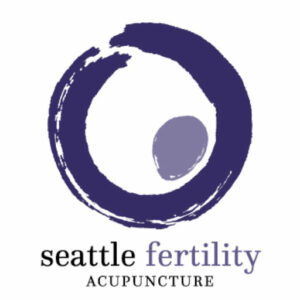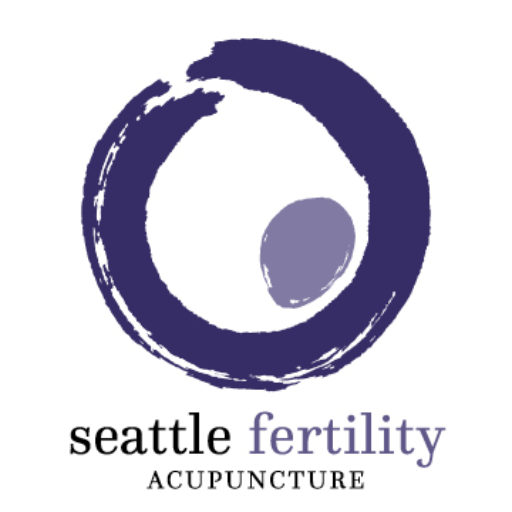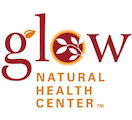PhotoBioModulation (Low Level Laser) for Infertility
Arne Grinsted1* and Maja Grinsted Hillegass2
1Founder and President of PowerMedic ApS, Denmark and PowerMedic Lasers, Inc, USA
EC GYNAECOLOGY
Research Article
*
Corresponding Author: Arne Grinsted, Founder and President of PowerMedic ApS, Denmark and PowerMedic Lasers, Inc, USA.
2Sales Manager, PowerMedic Lasers, Inc, USA
Received: August 20, 2019; Published: August 29, 2019
PhotoBioModulation (PBM) is well established as a fast and effective way to improving mitochondrial health and thereby optimiz- ing the availability of ATP in the cells.
Abstract
Since PBM was first discovered in 1967, thousands of studies have documented the benefits of PBM for a wide variety of condi- tions.
Since 2012, a group of clinics in Denmark and Norway have been using PBM to increase the chances of pregnancy for women with fertility challenges. In 2016, the number of women treated were 239, with 158 pregnancies or 66%. Today, the number have grown to an estimated 400 women treated, resulting in 260 pregnancies or 65%.
The conclusion is, that PBM offers a natural and non-invasive treatment option for women facing reproductive health issues, with no side effects.
Keywords: PhotoBioModulation (PBM); Low Level Laser Therapy (LLLT); Laser Therapy; Cold Laser Therapy; Infertility; Fertility; Reproductive Health; Assisted Reproductive Technology (ART)
PBM: PhotoBioModulation; ATP: Adenosine Triphosphate; LLLT: Low Level Laser Therapy; mW: Milliwatt; nm: Nanometer; J: Joules; ml: milliliter; ART: Assisted Reproductive Technology; IVF: In Vitro Fertilization; ICSI: Intracytoplasmic Sperm Injection; PCOS: Polycystic ovary syndrome
Abbreviations
Infertility is an increasing problem in the industrialized Western world. It is estimated that more than 20% of couples in the normally fertile age range are seeking help to become pregnant.
Introduction
The journey from deciding to expand your family to realizing that it does not come so easily, and finally seeking assisted reproductive technology (ART) over the course of several years – is brutal, to say the least.
And there is no guarantee, even after 5 years of ART, a large percentage ends up without the baby they so deeply desire.
The urge to procreate and pass on your genes to the next generation is one of the most basic instincts in any mammal, so not being able to do one of the most natural things attacks us at the very core of our being.
Since 2012, a group of clinics in Denmark and Norway have been offering a different approach to treating women with fertility issues. They are using PhotoBioModulation, PBM, also known as Low Level Laser Therapy, LLLT, or Laser Therapy for short. And with great suc- cess [1-7].
Citation: Arne Grinsted and Maja Grinsted Hillegass. “PhotoBioModulation for Infertility”. EC Gynaecology 8.9 (2019): 875-879.
PhotoBioModulation for Infertility
876 This case report illustrates the protocol used, the results seen so far, and a discussion on the mechanisms of PBM and cell interaction.
The PBM device being used by the clinics in Denmark and Norway is the GigaLaser, produced by PowerMedic ApS (Denmark).
Material and Methods
The protocol is as follows:
• Starting on the first day of menstruation, a total of 6 treatments are applied over the course of 2 weeks. • At this point, when ovulation is expected, insemination (natural or otherwise) is attempted.
• If the woman does not conceive, and menstruation returns, another course of treatments is given.
• For the treatment, the GigaLaser is placed directly over the abdominal area, 1 – 2 cm above the bare skin (the GigaLaser treatment screen covers 500 cm2). Each treatment is 23 minutes, and the total dose is 20,000 Joules (15,000 Joules of near infrared laser light at 808 nm, plus 5,000 Joules of red LED at 660 nm).
• There are no known side effects of PBM, and there is no discomfort associated with the treatment.
In 2016, we published an article with the results from 8 clinics. At that time, the total number of women treated was 239, resulting in 158 pregnancies, which is a success rate of 66%.
Results and Discussion
Today the number of clinics has increased, making it more difficult to keep an exact score. It is estimated that the total number of women treated has exceeded 400, with a resulting 260 pregnancies, or 65%.
The women treated are in the age range of 34 to 50 (yes, the oldest woman giving birth through this method was 50 years old).
They had all tried practically anything to get pregnant, diet, exercise, counseling, hormonal treatments, IVF, ICSI – with no result. Many of them had given up hope of ever conceiving a child. But with the PBM treatment, 2 out of 3 became pregnant, typically within 1 to 3 months.
It is worth noting that younger women do not respond as well to this treatment, unless there are other complications not directly re- lated to egg quality. More about this later. This corresponds well with Dr. Toshio Oshiro’s findings [8].
It is well known that average female fertility rate drops rapidly from the age of 30 (as illustrated in graph 1).
Graph 1
Citation: Arne Grinsted and Maja Grinsted Hillegass. “PhotoBioModulation for Infertility”. EC Gynaecology 8.9 (2019): 875-879.
PhotoBioModulation for Infertility
An axiom within PBM is: PBM works by creating energy in cells that lack energy.
877
In other words, if the cells do not lack energy, PBM makes no difference. That could explain why PBM is less effective for women under 30. Their bodies are already at the peak of fertility, and the cells in their reproductive system have maximum energy.
What PBM seems to be doing, is raising the curve for women above the age of 30 (as illustrated in graph 2).
Graph 2
Why is that? The age-related decline in female fertility is normally explained by a perceived decline in egg quality. But what if it is just a lack of energy in the cells? As women age, the mitochondria in their reproductive system age as well and become less and less effective at producing ATP.
Every cell in our body, except red blood cells, run on the energy source ATP, or Adenosine Triphosphate. ATP is produced by the mi- tochondria inside our cells. Throughout our body, most cells have around 2,000 mitochondria. Some more, some less. A few exceptions stand out, brain cells and heart cells with around 10,000 each. But the oocyte, the human egg cell, goes way beyond that, with a whopping 600,000 mitochondria.
This goes to emphasize how much energy it takes to create new life. But even with 600,000 mitochondria, when their efficiency drops with age, the result is still a rapid decline in fertility rate.
This is where PBM comes into the picture. Numerous scientific studies have shown that when cells with a lack of energy are exposed to laser light, the mitochondria will start producing more ATP. This will directly influence the oocyte, increasing the energy level and drasti- cally improve the chances of conceiving.
Aside from egg quality issues, there is a number of complications that can impede the likelihood of getting pregnant. All of these are addressed with a BPM device like the GigaLaser, since it covers the entire abdominal area. With the increased level of ATP, the cell has more power to do what it is supposed to do, and that leads to a host of other beneficial effects:
• Increases blood circulation • Reduces edemas
• Regulates inflammation
• Relieves pain
• Relaxes muscle tensions • Softens scar tissue
Citation: Arne Grinsted and Maja Grinsted Hillegass. “PhotoBioModulation for Infertility”. EC Gynaecology 8.9 (2019): 875-879.
PhotoBioModulation for Infertility
878 With these types of indications, PBM is often combined with physical therapies or acupuncture. The combination will optimize the environment in the abdominal area, creating the best conditions for pregnancy. This is akin to fertilizing the soil before planting a seed
The clinics using the GigaLaser report that PBM also have been beneficial for other conditions related to reproductive health, includ- ing normalizing the menstruation cycle (in cases of irregular, painful or missing menstruation), as well as relieving pain and discomfort related to endometriosis or PCOS.
Other applications
The clinics using PBM for infertility in women are also treating a growing number of men with low sperm counts. We have not yet assembled the statistical data, however the effects of PBM are dramatic: we see numbers increase from 2 million/ml to more than 40 mil- lion/ml, after one treatment.
PBM for men
The PBM device being used for this is the PowerLaser Pro500 or the PowerLaser Basic500, produced by PowerMedic ApS (Denmark).
The protocol is as follows: The PowerLaser is placed 1 – 2 cm above the testicle (the PowerLaser covers 1 cm2), one treatment is 2 x 10 seconds per testicle, total dose is 10 Joules per testicle (near infrared laser light at 808 nm).
Since 2012, out of a group of 400 infertile women in the age range 34 – 50 years, 260 women (or 65%) have conceived, following treat- ments with PBM.
Conclusion
Most of these women had already tried different types of ART and/or lifestyle changes to help them conceive, but with no success.
The explanation that PBM is having such dramatic effects for these women is most likely that PBM stimulates the mitochondria to produce more ATP in cells with reduced energy level. As women age, the mitochondria in their eggs age as well, causing a decline in egg quality. PBM provides more energy to the oocyte and – in addition – optimizes the environment in the abdominal area, creating the best chances of conceiving.
PBM offers a promising option for women facing reproductive health issues, as a natural, non-invasive supplement, to other types of Assisted Reproductive Technology (ART).
We would like to thank the clinics who use the GigaLaser and the PowerLaser in their work and for taking the time to collect and share their results.
Acknowledgements
This case report was prepared by Arne Grinsted, Founder and President of PowerMedic ApS, Denmark (manufacturer of the GigaLaser and the PowerLaser Series) and PowerMedic ApS’ sister company, PowerMedic Lasers, Inc., USA, as well as Maja Grinsted Hillegass, Sales Manager at PowerMedic Lasers, Inc., USA.
Conflict of Interest
1. Linda J Heffner. “Advanced Maternal Age – How Old Is Too Old?” New England Journal of Medicine 351 (2004): 1927-1929.
2. Hasan P., et al. “The possible application of low-reactive laser level therapy (LLLT) in the treatment of male infertility”. Laser Therapy
Bibliography
1.1 (1989): 89.
3. Bartmann A., et al. “Why do older women have poor impanation rates? A possible role of the mitochondria”. Journal of Assisted Repro-
duction and Genetics 21.3 (2004): 79-83.
4. Iwahata H., et al. “Treatment of female infertility incorporating low-reactive laser therapy (LLLT): An initial report”. Laser Therapy
15.1 (2006): 37.
Citation: Arne Grinsted and Maja Grinsted Hillegass. “PhotoBioModulation for Infertility”. EC Gynaecology 8.9 (2019): 875-879.
PhotoBioModulation for Infertility
879 5. Fujii S., et al. “Proximal priority treatment using the neck irradiator for adjunctive treatment of female infertility”. Laser Therapy 16.3
(2007): 133.
6. Taniguchi Y., et al. “Analysis of the curative effect of GaAlAs diode laser therapy in female infertility”. Laser Therapy 19.4 (2010): 257.
7. Kara T. “Lasers in infertility treatment. Irradiation of oocytes and spermatozoa”. Photomedicine and Laser Surgery 30.5 (2012): 239- 241.
- Ohshiro T. “Personal Overview of the application of LLLT in severely infertile Japanese females”. Laser Therapy 21.2 (2012): 97-103.
- Ohshiro T. “The proximal priority theory: An updated technique in low level laser therapy with an 830 nm GaAlAs laser”. Laser Therapy
21.4 (2012): 275–285.
10. Firestone R., et al. “The effects of low-level light exposure on sperm motion characteristics and DNA damage”. Journal of Andrology 33.3 (2012): 469-473.
11. Salman Yazdi R., et al. “Effect of 830 nm diode laser irradiation on human sperm motility”. Lasers in Medical Science 29.1 (2014): 97- 104.
12. Frangez H., et al. “Photomodulation with light emitting diodes improves sperm motility in men with asthenozoospermia”. Lasers in Medical Science 30.1 (2015): 235-240.
- Sato H. “The effects of laser light on sperm motility and velocity in vitro”. Andrologia 16.1 (1984): 23-25.
- Cohen N., et al. “Light irradiation of mouse spermatozoa: Stimulation of in vitro fertilization and calcium signals”. Photochemistry and
Photobiology 68.3 (1998): 407-413.
15. Ocaña-Quero J., et al. “Biological effects of helium-neon (He-Ne) laser irradiation on acrosome reaction in bull sperm cells”. Journal of
Photochemistry and Photobiology B: Biology 40.3 (1997): 294-298.
16. Montag M., et al. “Laser induced immobilization and plasma membrane permeabilization in human spermatozoa”. Human Reproduc-
tion 15.4 (2000): 846-852.
17. Corral-Baques M., et al. “Effect of 655-nm diode laser on dog sperm motility”. Lasers in Medical Science 20.1 (2005): 28-34.
18. Corral-Baques M., et al. “Effect of 655-nm laser at different powers on dog sperm motility parameter”. Proceedings SPIE 6191, Biopho- tonics and New Therapy Frontiers, (2006).
19. Corrral-Baqués M., et al. “The effect of low-level laser irradiation on dog spermatozoa motility is dependent on laser output power”. Lasers in Medical Science 24.5 (2009): 703-713.
20. Bianchi-Alves M., et al. “17 testicular histopathological characteristics of rams treated with low-level laser therapy: preliminary re- sults”. Reproduction Fertility and Development 26.1 (2013): 122-123.
21. Sergey Vladimirovich Moskvin and Oleg Ivanovich Apolikhin. “Effectiveness of low level laser therapy for treating male infertility”. Biomedicine (Taipei) 8.2 (2018): 7.
Volume 8 Issue 9 September 2019
© All rights reserved by Arne Grinsted and Maja Grinsted Hillegass.
Citation: Arne Grinsted and Maja Grinsted Hillegass. “PhotoBioModulation for Infertility”. EC Gynaecology 8.9 (2019): 875-879.


